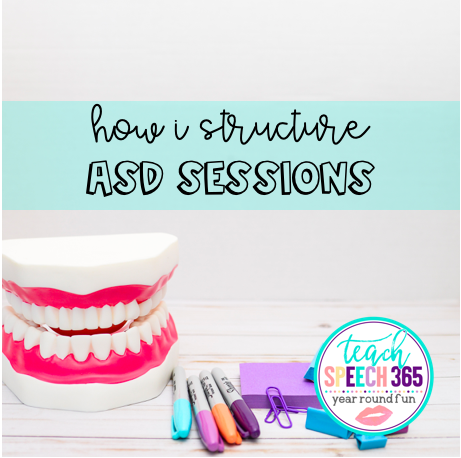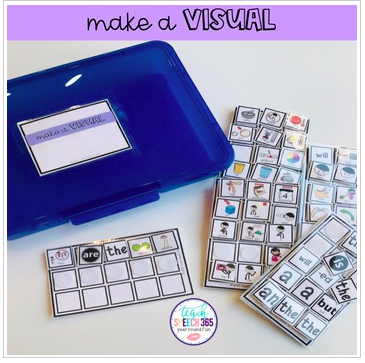How I Structure ASD Sessions

This was a topic that my readers wanted to see a blog post about. I think this varies greatly depending on the levels of your students, but for the purpose of this blog post, I will be focusing on my experience with this population. I also am going to be talking about students who are in self-contained classrooms, rather than pushed into the general education setting.
I have to say that I don’t typically structure my sessions for my ASD kids any differently than I do for my other students; however, there are some key differences. I usually will work in more breaks. So in 40 minute session, I try to give 2-3 short breaks throughout, rather than a 5 minute break at the end of the session.
If your students are using token boards in the classroom and you’re pulling them to your speech office, definitely try to bring the token board or have one in your office. You also might want to have a visual schedule for those students who need to see what is coming up and what they need to accomplish.
I usually only work with 1-2 students at a time, depending on the level of behaviors they exhibit. Some years, I’ve had more nonverbal students who are using devices, so that’s an extra consideration when planning who works well together. It changes year to year, as well. I also tend to put myself on the same side of my kidney table for these students, so that I’m closer to them as opposed to across the table from them. I usually have one student to my left and one to my right.
Use a lot of visuals! You can never have too many (really for any student, but especially for these students). I made a visual kit (click here to check it out), so that I could make almost any visual on the fly. This has helped because I can just quickly make whatever I need to help the student.

So for a breakdown for a 40 minute session:
1-10: Activity 1
10-15: Break 1
15-25: Activity 2
25-30: Break 2
30-40: Activity 3
You don’t necessarily need to have three different activities, but I’ve found it helps to have breaks, as that is usually what is occurring in the classroom.
Another thing to keep in mind is that you might encounter behaviors. I’ve sometimes had to end sessions early if behaviors are escalating. Typically if there are significant behaviors, I see the student in the classroom to decrease the amount of transition that he/she needs to handle. That also changes from year to year. Depending on the teacher, I have done mostly push in where I work at a location in the classroom, mostly pull out where I take the students to my speech office, or a combination of both. It really depends on the students and the teacher.
Hope this gives you some ideas!
